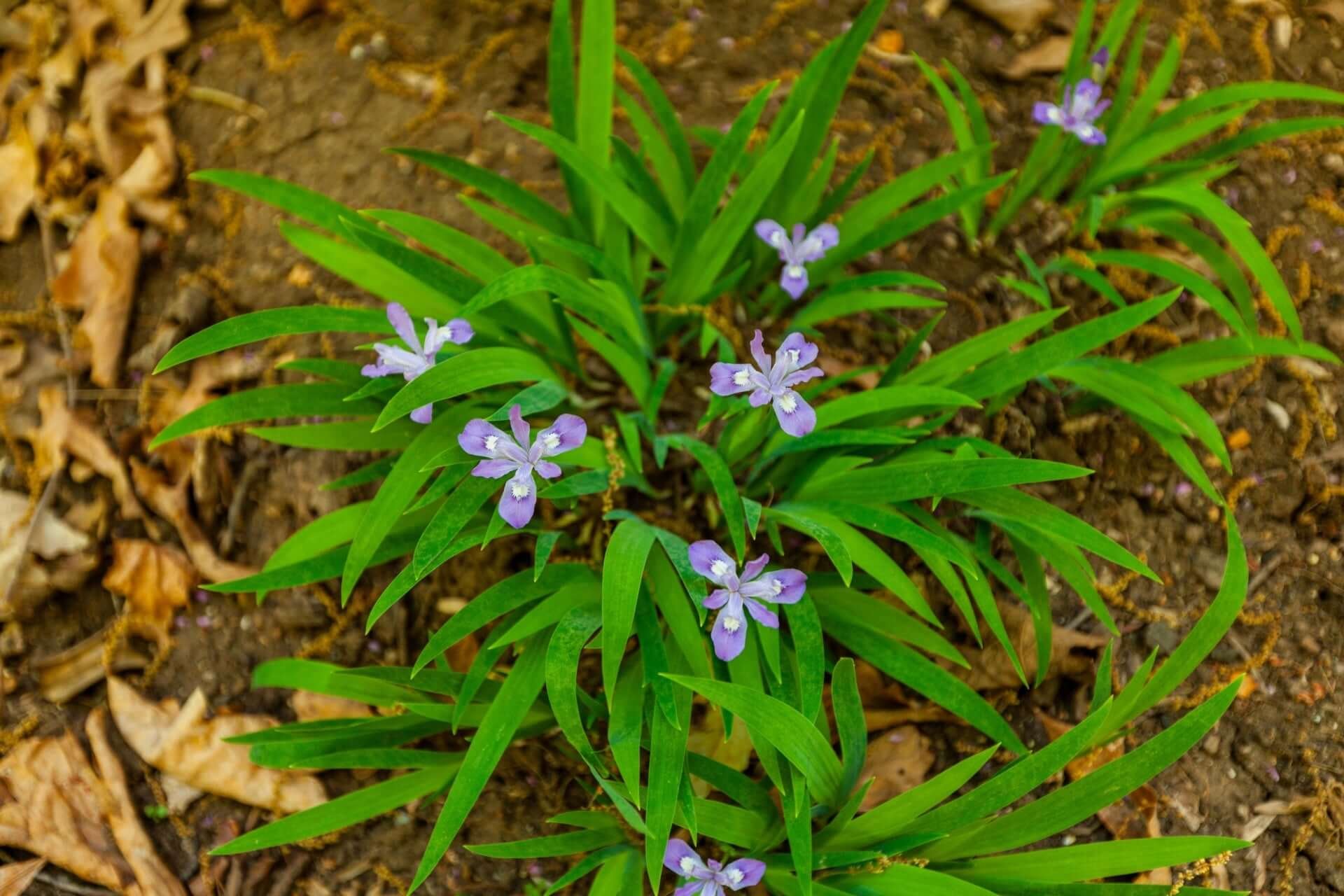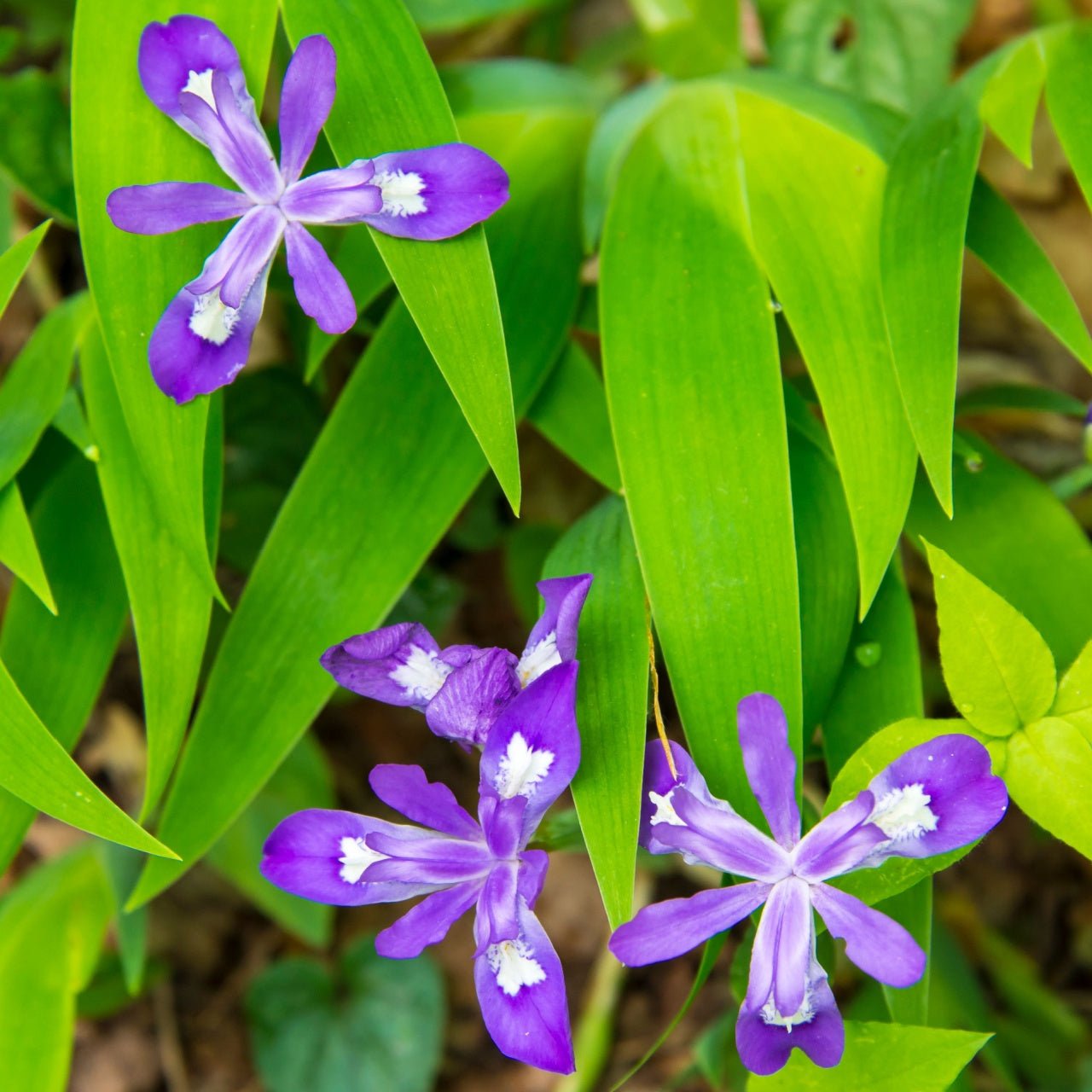The Dwarf Crested Iris is a delightful addition to any garden. It is admired for its low-growing, fan-shaped foliage, and charming lavender-blue blooms. This petite perennial brings a sense of elegance and whimsy to naturalized spaces and curated gardens. Its distinct crest along the flower adds a touch of uniqueness to the well-known beauty of the iris family. Known for being hardy and resilient, the Dwarf Crested Iris is a favorite among gardeners who seek a plant that adds a splash of color while requiring relatively low maintenance.
A key attraction of this plant is its adaptability. Whether it's the edge of a woodland garden or a rock garden, Dwarf Crested Irises thrive in various conditions, often surprising growers with their ability to flourish where other plants might struggle; its charming blooms and compact nature make it an ideal groundcover for those looking to create layers of texture and color in smaller or larger garden beds. With the proper care and environment, these irises will reward gardeners with a beautiful display in early spring.
How Big Do Dwarf Crested Iris Get?
Despite their regal beauty, Dwarf Crested Irises remain relatively small compared to their larger iris relatives. On average, the plants grow between 6 to 8 inches in height. The blooms sit atop slender, graceful stems, typically reaching about 1 to 2 inches in diameter, contrasting the often bold landscapes they adorn.
The foliage is equally modest, with the leaves forming dense clumps around 4 to 12 inches in length. These irises may not tower over other plants but hold their own, spreading through rhizomes to form vibrant mats that create an eye-catching ground cover. Over time, the plants will slowly spread, adding more lushness to the area, yet they do so in a manageable way, making them a favored choice for gardeners who want a contained, attractive feature.
Where to Plant Dwarf Crested Iris?
When deciding where to plant Dwarf Crested Iris, it's essential to consider the environment in which these native plants thrive. Originating from woodland areas, they naturally prefer well-drained soil with a rich organic composition, such as the humus-rich ground in forests. This makes them particularly well-suited for woodland gardens, where they can spread gracefully under trees and shrubs. Planting them in these conditions mimics their natural habitat, allowing the iris to flourish with minimal care.
Rock gardens are another excellent location for Dwarf Crested Iris, as their compact size and spreading nature work well among rocks and crevices. The well-drained soil in these areas prevents root rot, while the slight elevation of the stones helps protect them from excessive moisture. Another ideal spot is along paths or borders, where their delicate flowers can be appreciated up close. They also thrive in the shaded sections of more extensive perennial beds, offering a soft underlayer to taller plants.
In addition to proper soil, choosing a spot with the right light and shade is crucial. While these plants can tolerate various light conditions, mimicking their natural environment will yield the best results.
Do Dwarf Irises Like Sun or Shade?
The Dwarf Crested Iris prefers a balance of sun and shade, with partial shade ideal for optimal growth. This preference for dappled sunlight mirrors the plant's natural woodland habitat, where sunlight filters through the tree canopy, providing a mix of light and shadow throughout the day.

While these irises can tolerate full sun, particularly in cooler climates, too much direct sunlight, especially in warmer regions, can cause stress to the plant. In regions with hotter summers, they do better when planted in areas with morning sun and afternoon shade. This ensures they get enough light to promote blooming while being shielded from the intense midday heat. However, if grown in deep shade, the iris may become leggy, and blooms may be less prolific. Striking the right balance between light and shade is critical to ensuring a healthy, blooming Dwarf Crested Iris.
Do Iris Cristata Like Sun or Shade?
Iris cristata, commonly known as Dwarf Crested Iris, generally enjoy partial to full shade, depending on the climate. They can handle more direct sunlight in northern regions, provided the soil remains moist and well-drained. In southern regions, where the sun is more intense, they perform better in shaded areas, thriving in the cooler, dappled light.
Gardeners often plant Iris cristata beneath trees or along the north side of buildings or fences where sunlight is limited but still available in small amounts. The shade helps maintain a more relaxed root environment, essential for the plant's health. Since Iris cristata is accustomed to growing in rich, organic forest floors, replicating this setting with mulch or compost-rich soil helps it thrive in these shaded environments. Ensuring the soil is loose and well-drained will prevent waterlogging, which can harm the iris's rhizomes.
If you aim to achieve an eye-catching, long-lasting display in your garden, finding a location that provides dappled sunlight or full shade, along with moist, well-drained soil, is your best bet. Planting these irises in such conditions allows them to flourish naturally, offering vibrant blooms in the early spring before the heavy foliage of trees and taller plants fully develop.
Dwarf Crested Iris is a captivating plant that holds its own in any garden setting, from woodland edges to rock gardens and beyond. Its delicate yet resilient nature offers beauty in small spaces without overwhelming other plants. Whether you plant it in a shaded corner or along a sunny pathway, the key to success is providing the right balance of light, moisture, and soil conditions. As the iris gracefully unfurls its petals each spring, it reminds us of nature's timeless beauty, even in the smallest plants.
Read more

Anemone is a beautiful choice for gardeners looking to add spring and fall interest to their landscape. With its wide range of varieties, resilient growth habits, and ability to naturalize, the ane...

Bellwort's delicate form and soft yellow color make it an ideal plant for creating a serene, calming garden space. Whether nestled beneath tall trees or lining a shaded path, its merry bells bring ...



